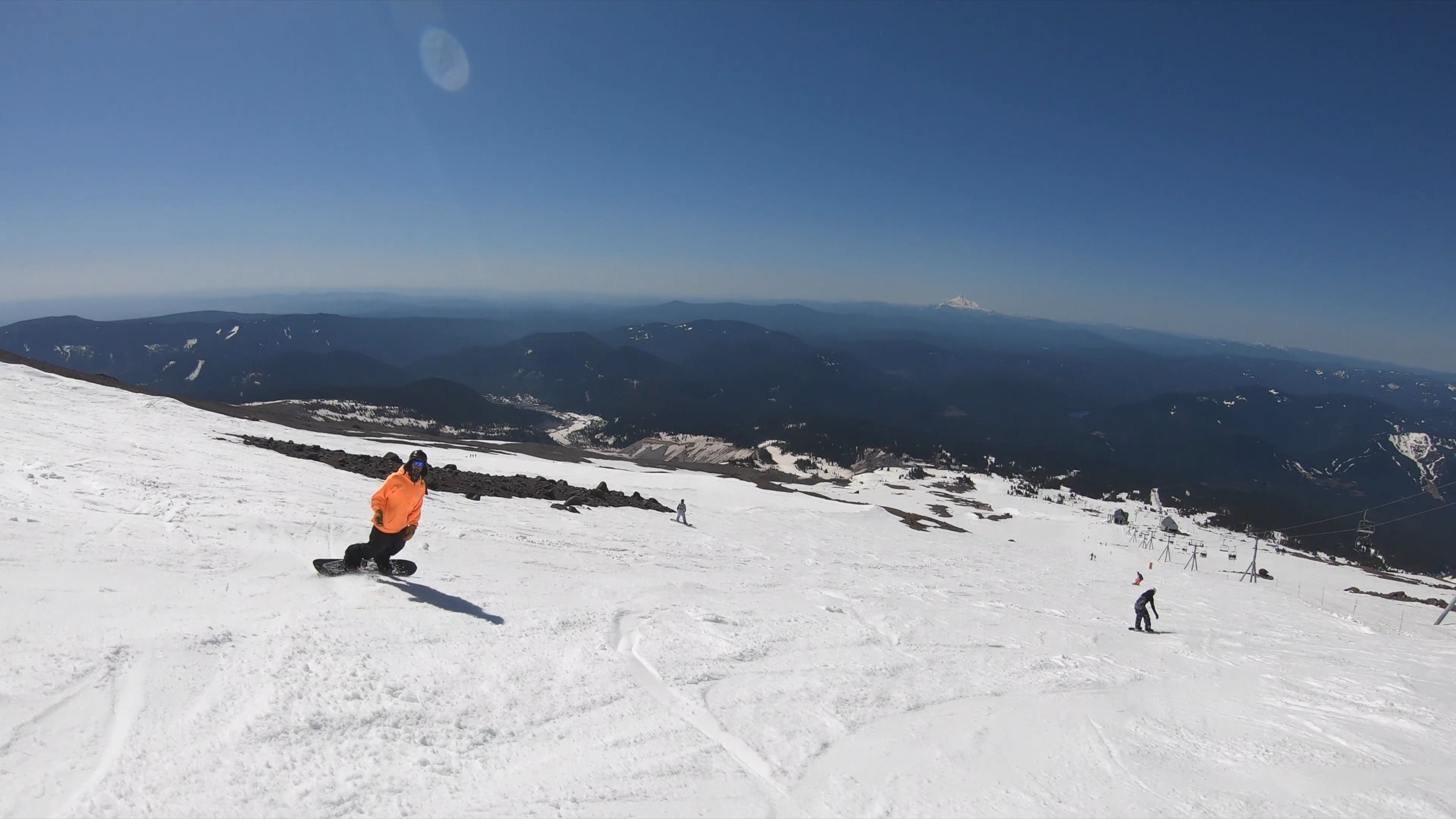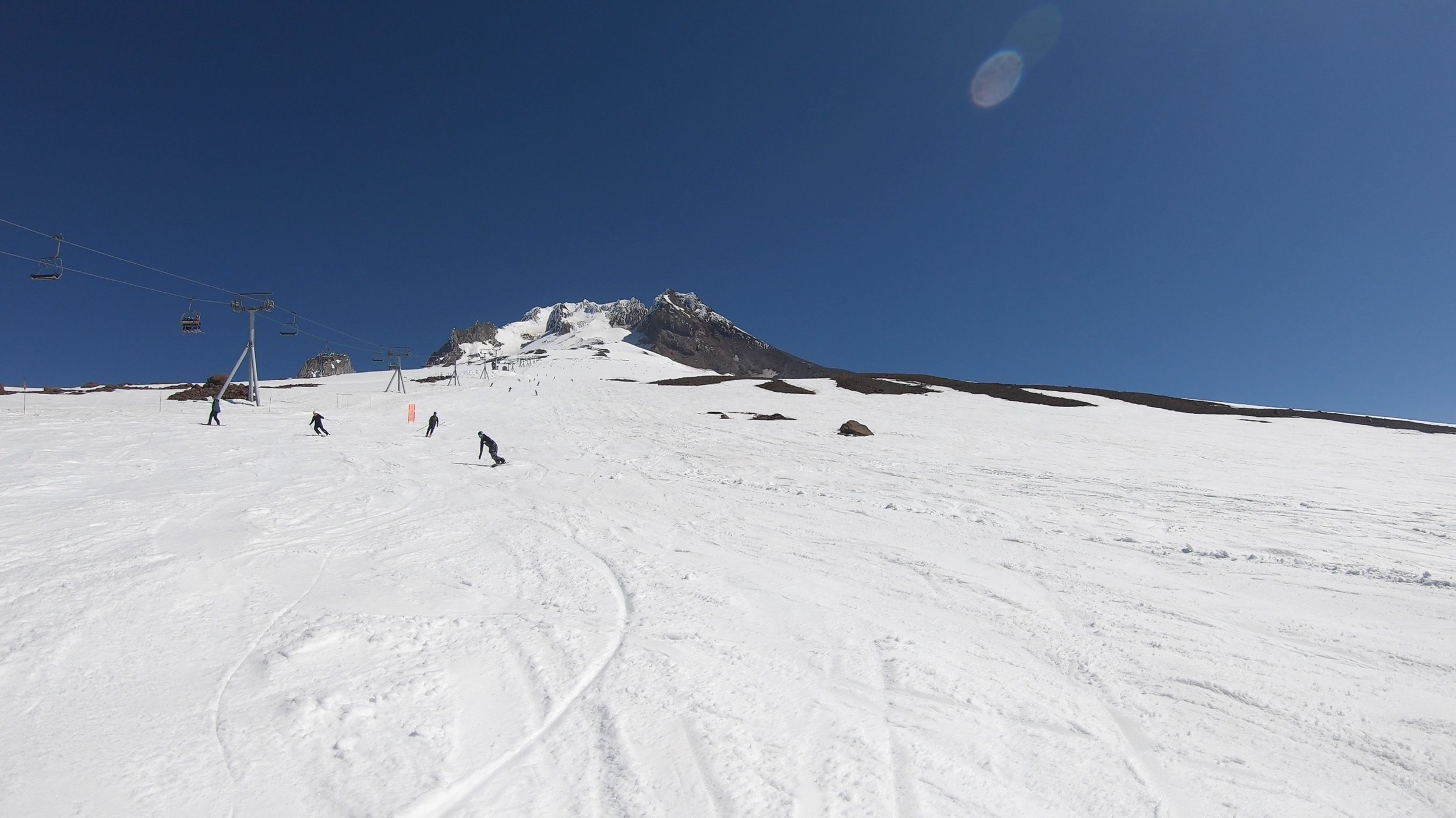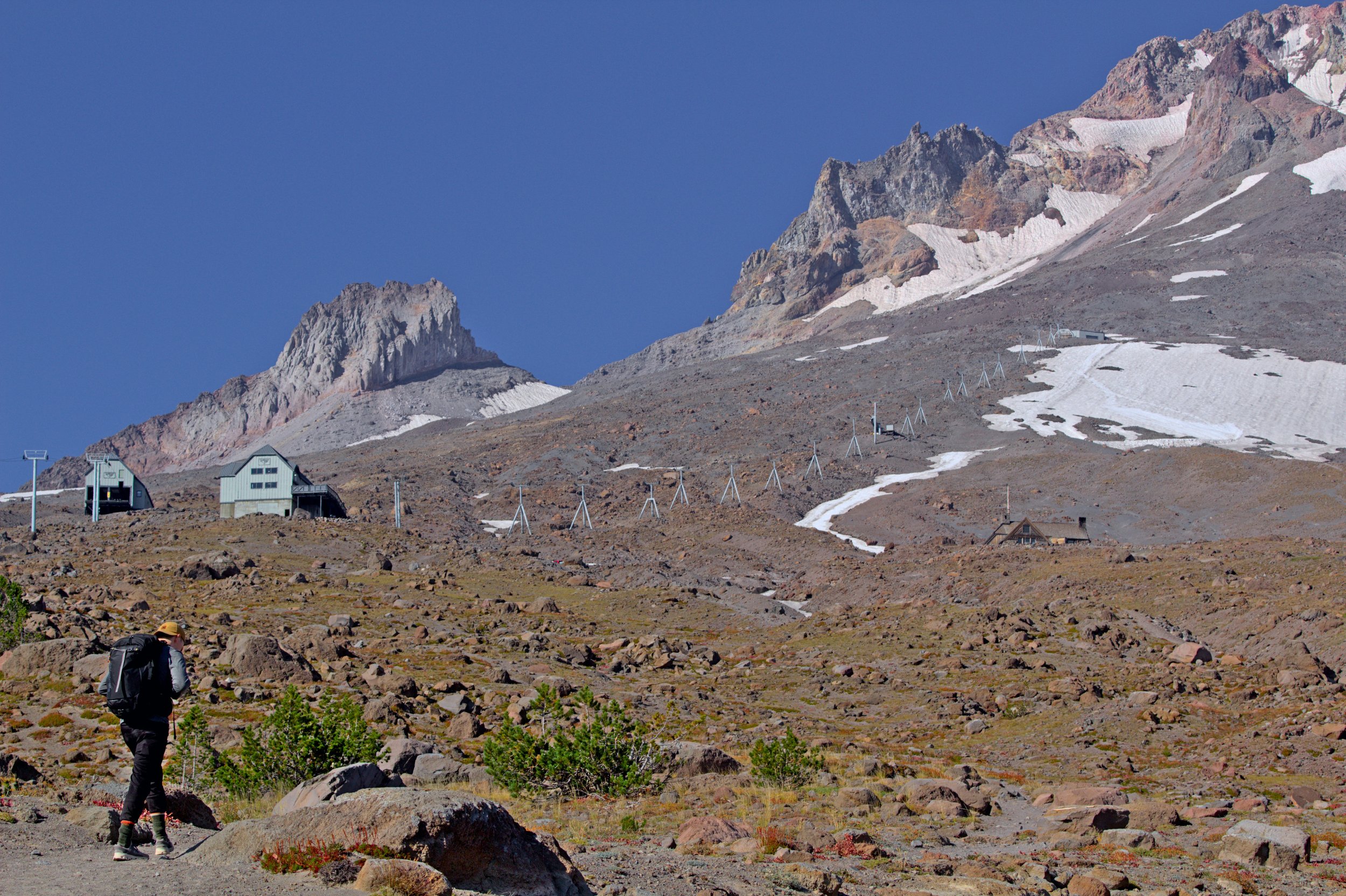Summer Ski Resorts: Are They Worth the Trip?
Perhaps secondary to only snow, few words are more associated with ski resorts than “winter.” But what if you wanted to throw that concept out the window, and hit the slopes during the least logical time for snow to be around—or in other words, the summer? Well, it turns out you’re not out of luck. In fact, there are some resorts that not only stay open when it gets warm, but arguably reach their prime.
In this article, we’ll go through what you can expect should you choose to ski or snowboard during the summer season, and how it compares to a typical winter vacation. We’ll give you a sense of the pros of this type of off-season trip, what it falls short in, and who this kind of vacation is for. Enjoy!
Temperature
When it comes to deciding between a summer and winter ski trip, the first obvious difference is the temperature. Ski resorts are hotter during the summer, with resorts offering comfortable temperatures for essentially the whole season, unlike winter ski resorts, which are typically, but not always, the opposite. In many cases, a summer ski day will allow for shorts and tank top weather. However, summer skiing can still be cool enough to justify a jacket, especially at higher elevations—and temperature swings can occur quickly, especially if it gets windy.
Skiing in shorts is often an option when the summer season rolls around.
Sun Exposure
Another big difference between summer and winter skiing comes in sun exposure. The sun’s UV rays are typically strongest during the hotter months, and with most summer skiing terrain present on wide-open, highly-exposed terrain, the rays can be absolutely brutal. On the other hand, while the sun can be quite strong during sunny winter days in the high-alpine, days are often overcast or too cold to keep one’s skin uncovered in the first place. High-strength sunscreen is an absolute must on any summer ski day, whereas during the winter season, sunscreen is more of a case-by-case appliance, and in many cases, isn’t needed at all.
On summer days, the sun’s UV rays can be extremely strong on the slopes.
Snow Quality
The temperature and sun exposure discrepancies cause a number of differences in snow quality between the summer and winter seasons. Winter is when the bulk of ski resorts build their snow base through natural snowfall and artificial accumulation, while summer is when this base is at the peak of melting away, although snow storms can occur occasionally. Wait, what—snow storms during the summer?? That’s right—at least during typical seasons, summer ski resorts experience occasional winter-like conditions, and they often see below-freezing temperatures at night, which helps preserve the snowpack.
While winter snow can be any combination of powdery, granular, or icy, summer snow typically alternates between just two states: corn and slush. Which state the conditions are in is pretty much dependent on one factor: whether or not the temperatures froze overnight. Overnight freezes turn the snow into a packed sheet of ice, but once the very strong sun comes out, the snowpack softens up quickly, and can often be in really good shape as soon as the lifts open.
But in the event the footprint hasn’t frozen overnight, a summer ski resort’s snowpack becomes unstable and slushy very quickly. On these days, guests will find heavy snow that may be too sticky to enjoyably ski—and changing between sunny and shaded slopes can bring rapid, immediate changes in consistency. Or to put it another way, that means that just like in the winter when it comes to ice and thin cover, summer snow conditions can vary quite a bit as well.
Even during the summer, ski resorts can see occasional snowstorms.
Storm Susceptibility
Speaking of variance, you might expect winter conditions to vary based on snowfall, visibility, and various storm cycles. But what you might not expect is that storms can interrupt summer operations as well, even if it isn’t snowing. While typical summer resorts sit in climates that are much sunnier during the warmer months than in the winter, rain or heavy wind can be factors that interrupt resort operations. In addition, many resorts are quite prone to thunder and lightning during the summer, and a lightning strike within any reasonable proximity to the resort usually means an immediate shutdown. In select circumstances, stormy conditions during the summer can force the resort to close for a few days in a row, whereas during the winter, such long closures typically only occur after extreme weather events such as profound, multi-foot snowstorms.
Avalanche Danger
A significant and notable circumstance that’s shared between the summer and winter seasons is the presence of avalanches. Yes, even though they happen less frequently, avalanches are still a problem during the summer. During the winter, loose snow and slab avalanches can occur on steep slopes, most often after fresh snowfall. But during the summer, avalanches are most often caused by wet snow—when the occasional snow storm rolls in, the very warm layer below the fresh powder is ripe for instability and slide conditions. In the event of a new layer of snow, summer ski resorts may be forced to close some or all of their terrain for avalanche mitigation, just as they do during the winter.
Summer ski resorts, such as Mount Hood’s Timberline, can wrap up daily operations as early as 1pm.
Operating Hours
In fact, the summer condition variations reflect in the operating hours of resorts during that time. While winter ski resorts typically operate between some flavor of 9am and 4pm and can go much later in certain circumstances, summer resorts often stop spinning their lifts around 1pm. This is due to the fact that even when conditions start out the day with enjoyable corn, continued sun exposure turns the snow into slush by the afternoon—and in many cases, the resort needs to limit traffic on the snowpack to preserve it as long as possible. Winter conditions rarely change this quickly, and if you get to a resort on any day that’s not a massive powder day during the colder months, it’s not exactly unreasonable to assume similar conditions in the morning as you’ll see in the afternoon.
Nearly all summer skiing terrain exists on high-alpine glaciers.
Terrain Diversity
The next big difference between winter and summer comes in the type of terrain you’ll be able to ski. During the winter, guests can ski or snowboard on any type of terrain the activity is feasible on, including below-treeline slopes, glades, and high-alpine bowls. On the other hand, almost all summer skiing terrain is on high-alpine glaciers, where a year-round tundra base allows the snowpack to prevail through the warmest months. Lower elevation areas that are hospitable to trees are not typically cold enough through the summer to host skiable terrain, although if there’s a particularly strong snow base left over from the winter, certain resorts can prove exceptions to this rule.
Summer skiing does bring some tangible terrain benefits versus winter operations. Those looking for bump skiing may find summer operations to be a lot of fun—when bumps build up, they tend to be soft and easier to tackle than winter moguls, which can get frozen, hard, and very taxing. In addition, the corn skiing during prime conditions is a lot more playful than icy or skied-off conditions that winter resorts tend to see after a few days with no snowfall.
Resort Size
Summer ski resort footprints are generally smaller than the winter ones. While the best winter destinations boast days’ worth of skiable terrain, every summer resort is small enough to fully cover in a day, if that. In the cases of summer resorts that also operate during the winter, it’s often the case that only a fraction of the full footprint will remain open through the warmer months. And while winter ski resorts often open up more terrain as the season goes on and more storms build a base, just the opposite happens during the summer, with the snowpack gradually receding until it’s not feasibly skiable anymore. At the main summer resorts, this typically happens between June and July, but can happen earlier or later depending on the year.
Snowpacks at summer ski resorts gradually recede as the season goes on.
Resort Availability
But perhaps the biggest difference between summer and winter skiing is in its availability. During the winter, hundreds of ski resorts open for skiing and snowboarding around North America, with hundreds more available around the globe. However, there are just two North American outdoor ski resorts that stay open to the public reliably throughout the summer: Mount Hood’s Timberline Lodge, which operates nearly year-round, and Montana’s Beartooth Basin, which is a true summer-only ski resort, but typically only operates for a few weeks in June. When it comes to Europe, there are only a handful of glaciers that stay open for part or all of the summer season. Many of these resorts have had to cut their season length due to increasing temperature trends. That said, the number of operating summer resorts can increase substantially during the best snow years. Much better known areas such as Mammoth, Palisades Tahoe, and Snowbird can stay open through July or even August, as is set to happen this year (at least for the former two). That being said, when the resorts open this late, these mountains usually only operate on weekends and offer a small fraction of their winter footprint.
Palisades Tahoe is one of only a handful of North American ski resorts that will be operating this summer.
Mountain Access Restrictions
Another factor that limits summer skiing access is that some of the mountains that do retain snow choose to close to the public. Popular winter resorts such as Copper and Whistler Blackcomb do spin select lifts through parts of the summer, but they’re open to race training only. As a result, members of the public cannot access these resorts, even if the conditions are good enough to justify it.
Other resorts, such as Timberline Lodge, open only parts of the resort to the public with a general lift ticket during the summer. Guests have to pay a sizable daily add-on cost to access select resort zones, such as the terrain park.
Beginner Experience
While the warmer temperatures may seem inviting, the summer is also probably not the best time to learn how to ski or snowboard. None of the summer resorts offer beginner terrain, and the rapidly changing snow quality makes it tough to pick up fundamental skills and put them to memory. Those looking for a learning mountain should definitely aim for a winter vacation, where beginner terrain resort options are readily apparent and ski school operations are much more robust. In fact, every ski resort that operates through the summer discontinues their group lessons by the time June rolls around, and while private lessons can be available, they’re often extremely limited and very expensive.
While the warmer slopes may look inviting, summer is not a good time to learn how to ski or snowboard.
Non-Skiing Activity Access
Summer skiing brings benefits when it comes to the availability of other activities. Many summer ski operations happen in tandem with opportunities such as mountain biking, golfing, and scenic hiking access, among others. Winter resorts often offer activities such as cross-country skiing, tubing, and ice skating, but these aren’t really primary daily activities and don’t tend to be as extensive as the summer options. In fact, while skiing is usually the main attraction to winter resorts, hiking and biking are often the dominant attraction by the time the summer season starts, even if a resort still offers skiing and snowboarding.
Indoor Skiing
We would be remiss if we didn’t mention the one type of hill that’s going to be the same regardless of when you visit—and that’s an indoor ski resort. There’s currently only one in North America—Big Snow American Dream—but no matter when you go, you can expect the same temperatures and terrain. But what might be surprising is you actually might see slightly better conditions during the summer than in the winter at this type of place. As one may or may not expect, Big Snow is way less trafficked during the summer than during the winter, leading to lower crowds and better retention of the man made snow.
Big Snow American Dream, an indoor ski resort, operates year round at the same 28°F (-2°C) temperature.
Verdict
So if you’re planning a ski trip and trying to choose between a summer and winter vacation, which one is best for you? Well, the sheer dearth of resorts and smaller footprints will make a summer trip less practical for the overwhelming majority of alpine sports vacationers. But for those who want to ski or ride in comfortable or even hot temperatures—or who just want to experience snow during a time when it logically shouldn’t be around, there are few opportunities as incredible and mind-blowing as hitting the slopes during the summer.
Winter skiing makes much more sense as a persistent activity to get into, but when it comes to bucket list opportunities to do once, summer skiing is hard to beat. Ultimately, winter and summer skiing make the most sense when paired together, and those looking to visit the slopes during the summer will get the most out of the experience after extensive practice hitting the slopes during the winter and familiarizing themselves with different types of snow conditions.
For more information on these resorts, check out our Timberline Lodge, Mammoth, Palisades Tahoe, and Snowbird reviews, as well as our full North American ski resort rankings.









